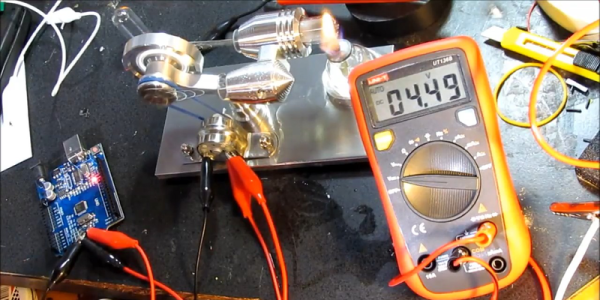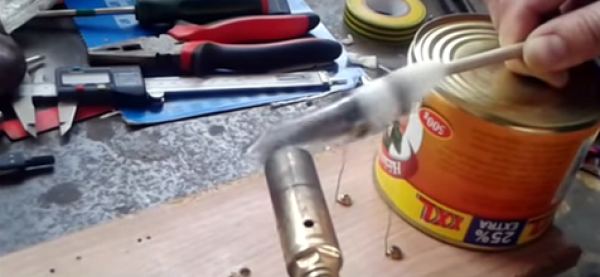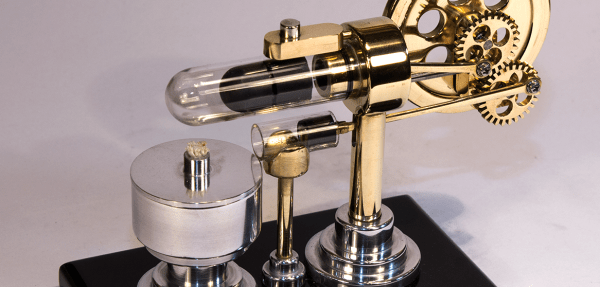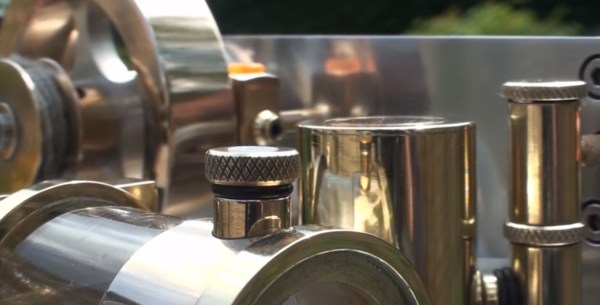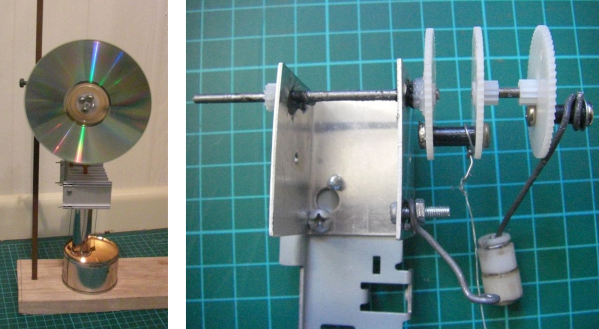Following the time-honored YouTube tradition of ordering cheap stuff online and playing with it while the camera runs, [Monta Elkins] bought a Stirling engine that drives a DC motor used as a generator. How much electrical juice can this thing provide, running on just denatured alcohol? (Will it blend?)
The answer is probably not really a spoiler: it generates enough to run “Blink.ino” on a stock Arduino, at least when powered directly through the 5 V rail. [Monta] recorded an open-circuit voltage of around 5 V, and a short-circuit current of around 100 mA at a measured few hundred millivolts. While he didn’t log enough of the points in-between to make a real power curve, we’re guessing the generator might be a better match for 3.3 V electronics. The real question is whether or not it can handle the peaky demands of an ESP8266. Serious questions, indeed!
The video is a tad long, but it’s more than made up for by the sight of an open flame vibro-botting itself across his desk while [Monta] is trying to cool the cold side down with a melting ice cube. Which got us thinking, naturally. If you just had two of the Stirling engines… Continue reading “Ethanol-Powered Arduinos”

